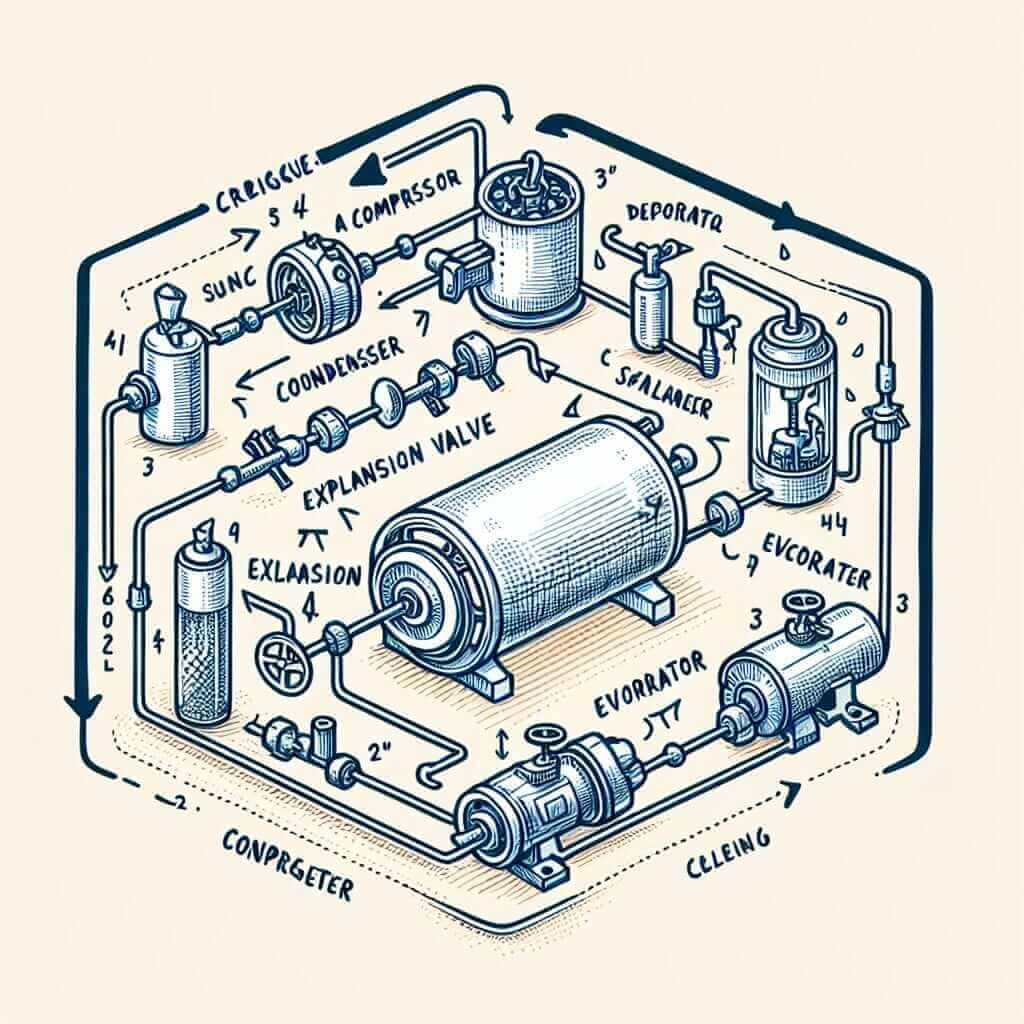As an IELTS instructor with over two decades of experience, I’ve often encountered students who underestimate the power of understanding everyday objects. Believe it or not, topics like “how a refrigerator works” frequently pop up in the IELTS Speaking test, particularly in Part 2 where you might be asked to describe a common household appliance. Don’t let this seemingly simple topic catch you off guard! By mastering the vocabulary and explanation, you can demonstrate your English fluency and impress the examiner.
Why Knowing About Refrigerators Matters for IELTS
The IELTS Speaking test assesses your ability to communicate effectively in English. While you won’t be tested on your technical knowledge, being able to clearly describe a process like refrigeration showcases several key skills:
- Vocabulary Range: You’ll need to use specific vocabulary related to temperature, states of matter, and mechanical processes.
- Coherence and Cohesion: Explaining how a refrigerator works requires you to present information in a logical sequence, using appropriate linking words and discourse markers.
- Fluency and Pronunciation: A clear understanding of the topic will allow you to speak more confidently and fluently.
Explaining How a Refrigerator Works: A Step-by-Step Guide
Here’s a breakdown of the refrigeration process, using vocabulary suitable for the IELTS:
-
The Refrigerant: Refrigerators use a special substance called a refrigerant, which is a fluid that can easily transition between liquid and gaseous states.
-
Evaporation: The refrigerant, in its liquid form, absorbs heat from the air inside the refrigerator. This heat causes the refrigerant to evaporate, changing from a liquid to a gas.
-
Compression: The gaseous refrigerant is then drawn into the compressor, a pump that increases its pressure and temperature.
-
Condensation: The hot, high-pressure refrigerant then flows through condenser coils, usually located at the back of the refrigerator. Here, the heat is released into the surrounding air, causing the refrigerant to condense back into a liquid.
-
Expansion: The liquid refrigerant, now cooled, passes through an expansion valve, which reduces its pressure and consequently, its temperature.
-
Cycle Repeats: The cold refrigerant then flows back into the refrigerator, where it absorbs more heat and the cycle repeats.
 refrigerator cycle diagram
refrigerator cycle diagram
IELTS Speaking Test Example
Let’s imagine you’re presented with this IELTS Speaking Part 2 cue card:
Describe a household appliance you find useful.
You could choose the refrigerator and structure your response like this:
“One appliance I find indispensable is my refrigerator. It’s essential for keeping food fresh and preventing spoilage. Essentially, it works by cycling a refrigerant through a system of coils and a compressor. The refrigerant absorbs heat from inside the fridge, causing it to evaporate. Then, the compressor increases the refrigerant’s temperature, which is released outside the fridge. This cycle of absorbing and releasing heat keeps the interior temperature consistently cool.”
Tips for Success
- Practice Makes Perfect: Rehearse explaining how a refrigerator works several times using different words and phrases.
- Record Yourself: Listening to your own explanations will help you identify areas for improvement in terms of vocabulary, grammar, and fluency.
- Don’t Overcomplicate: Remember, the examiner is assessing your English communication skills, not your technical expertise. A clear and concise explanation is sufficient.
- Connect to Personal Experience: If possible, relate the appliance to your own life. For example, you could mention how your refrigerator helps you store fresh produce or leftovers.
By understanding and being able to articulate how everyday objects work, you’ll be better prepared to tackle a wider range of topics in the IELTS Speaking test. Good luck!


